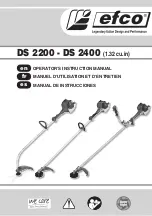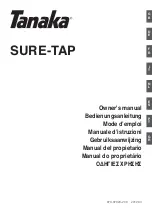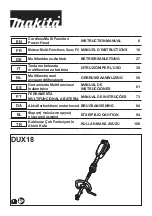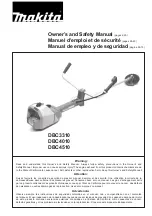
Section 3: Operating Instructions
RCB5715 & RCBM5715 Rotary Cutter 337-046M
7/8/20
46
Set Blade Cutting Height
Adjust cutter to field cutting height. See
Set Wing Lift Lever to Float Position
Use float position of your tractor’s hydraulic system to
provide automatic floating of the wings for varying terrain
conditions. This will ensure wing gauge wheels are in
continuous contact with the ground at all times.
Rephasing Lift Cylinders
The lift cylinders may, after a period of time, get out of
time or phase. The effects of this can be seen when one
deck of the cutter is higher or lower than the others
because its lift cylinder is retracted more than the other lift
cylinders. Also, tractors with pressure detentes do not
allow hydraulic systems to “automatically” rephase at the
top of the lift cycle. This must be done manually or the
rephasing cylinders will not function properly.
To rephase lift cylinders manually, raise cutter completely
up and hold tractor hydraulic lever on for several seconds
to give cylinders time to rephase. This should be done
each time the cutter is raised and whenever the decks are
uneven.
Select Gear Range
Optimum ground speed depends on density of material
being cut, horsepower rating of tractor, and terrain.
Always operate tractor at cutter’s full-rated power take-off
speed in a gear range that allows the cutter to make a
smooth cut without lugging the tractor down, usually
2 to 5 mph (3.2 to 8.0 km/h). Loss of power take-off speed
will allow blades to hinge back and result in ragged,
uneven cutting.
IMPORTANT:
Do not let the wing flex down more
than 20 degrees while operating the cutter. Doing so
can cause damage to the cutter.
IMPORTANT:
When cutting, the wing folding lever
should be in float position to avoid damage to the
wing hydraulic cylinder and axle while cutting on
Engage Blades
1. Select a gear range that will allow the cutter to make
a smooth cut without lugging the tractor down.
2. With wings lowered, increase throttle to a speed just
enough to get the cutter started without stalling the
tractor while slowly engaging the power take-off. Use
tractor’s power take-off soft start option if available.
3. Ensure power shafts are rotating at full power take-off
speed and cutter is not vibrating excessively for three
full seconds at full cutter speed. If cutter vibrates for
three full seconds, immediately disengage power
take-off, shut tractor down, and remove ignition key.
Wait for all blades to come to a complete stop before
dismounting the tractor.
4. If cutter was shut down due to excessive vibration,
investigate the cause.
See
on page 47 for detailed instructions.
5. If cutter was not shut down, continue with forward
cutting operation at full power take-off operating
speed. Make a new gear selection if tractor is lugging
down or if cutter is making a rough cut.
6. Periodically, shut tractor down according to
on page 42 and
inspect the cutter.
7. Dismount tractor and check for objects wrapped
around the blade spindles. Block deck up before
removing objects.
8. Frequently inspect cutter for loose bolts and nuts.
Tighten all loose hardware as indicated in the
“Torque Values Chart”
on page 79.
Disengage Blades
NOTE:
Never run tractor in an economy mode or
any other mode that will drop power or speed from
the power take-off. This may result in ragged and
uneven cutting.
IMPORTANT:
Cutter blades can lock-up against
each other during start-up and shut-down,
especially if tractor’s power take-off engagement is
“INSTANT ON” and/or “INSTANT OFF”. Follow Blade
Engagement and Blade Disengagement instructions
to help eliminate blade lock up.
IMPORTANT:
It will take longer for the blades to
come to a complete stop on cutters equipped with a
main driveline that has an over-running clutch, as
opposed to a cutter with a main driveline that does
not have an over-running clutch.
















































